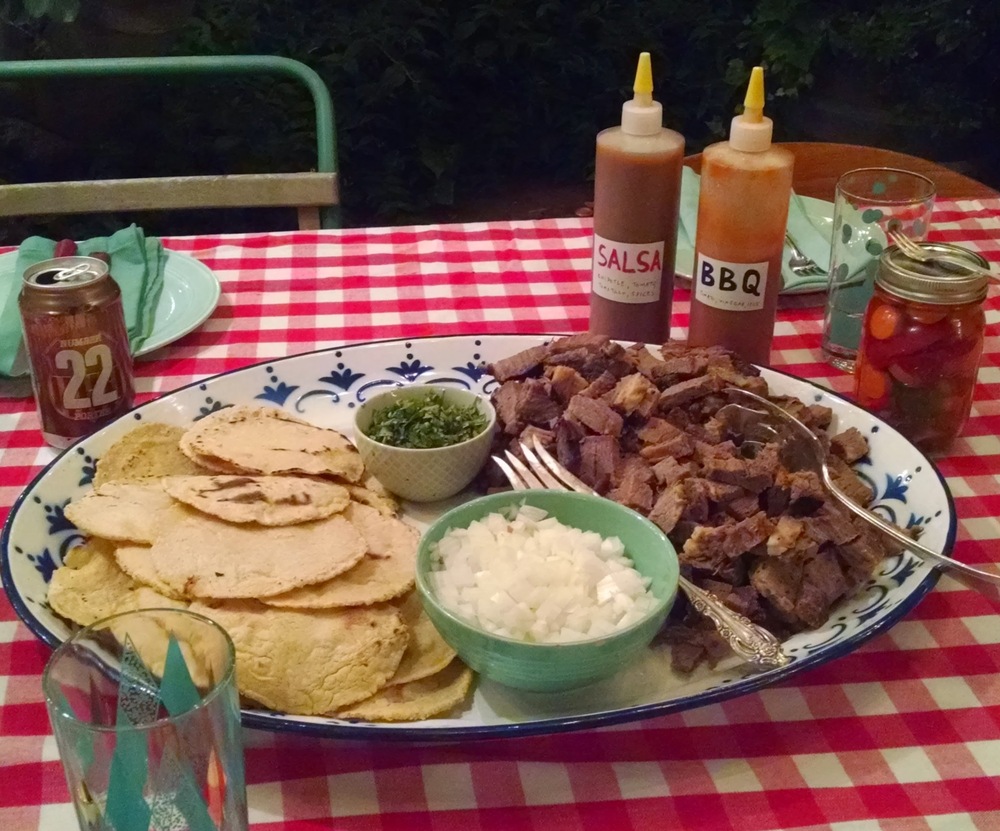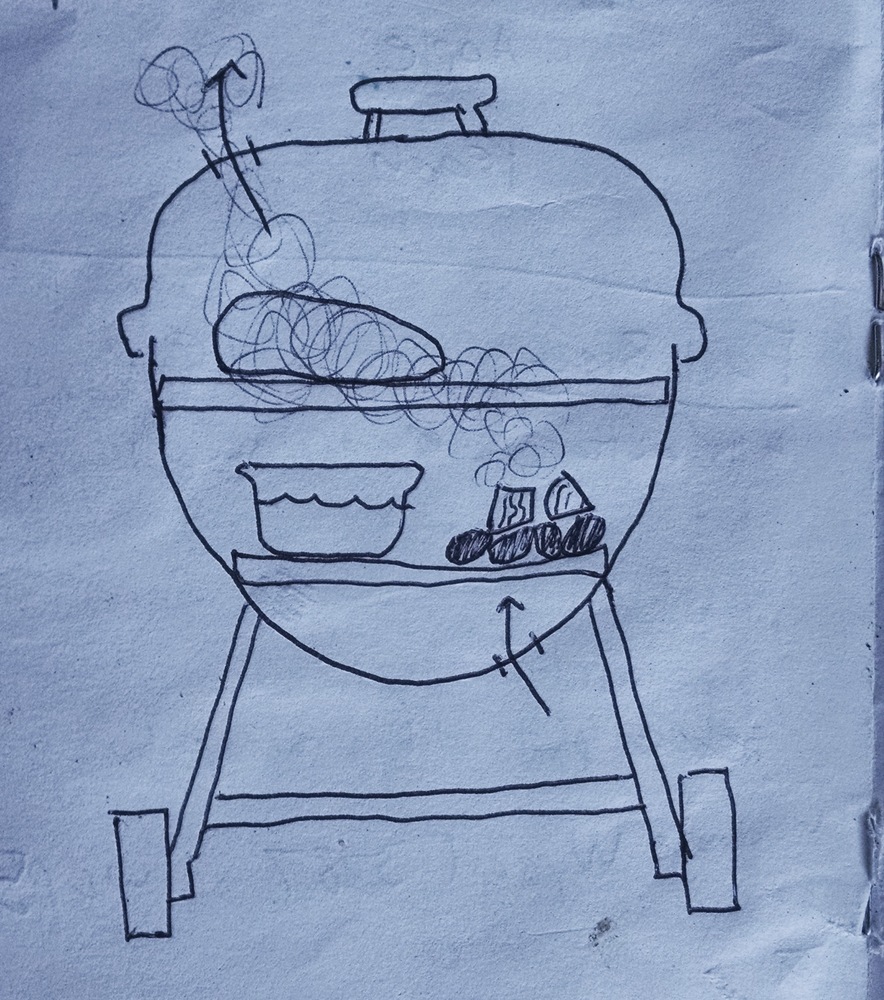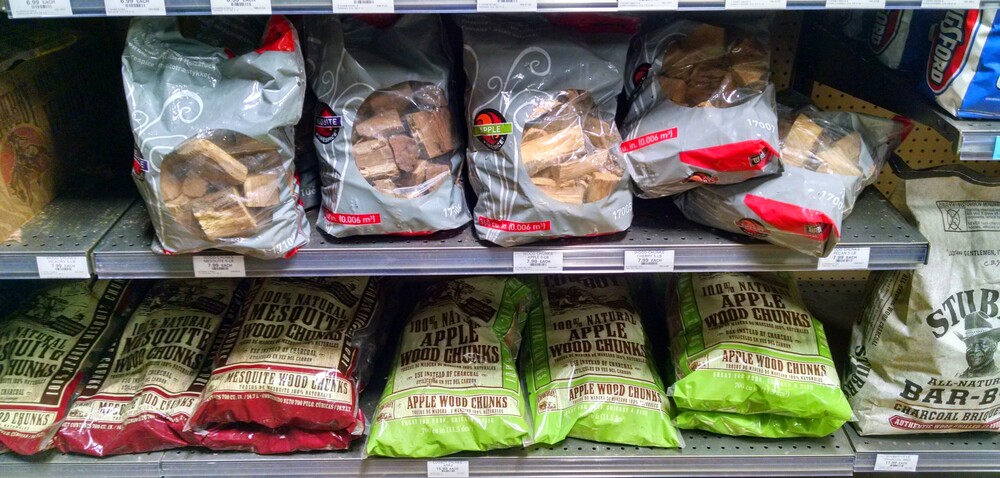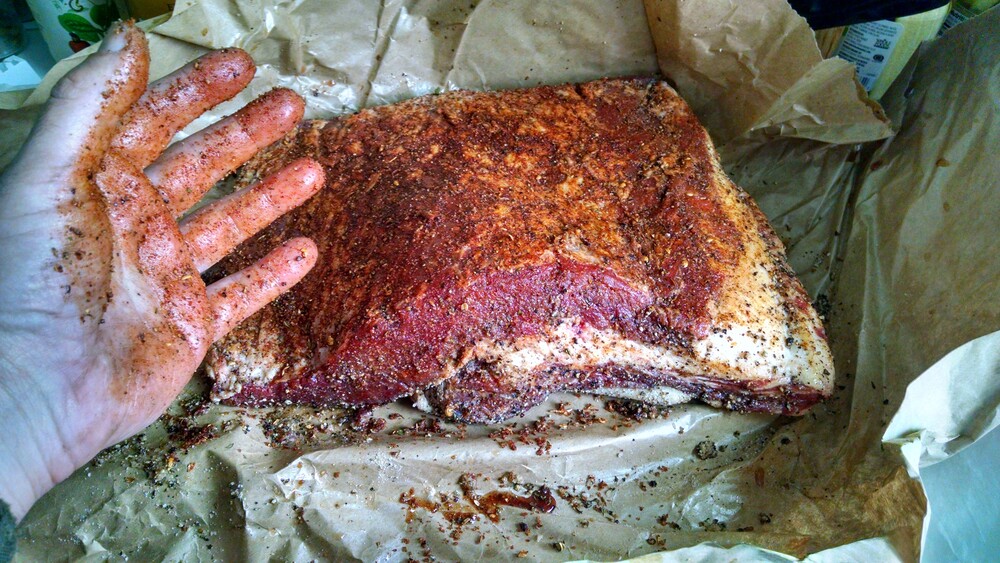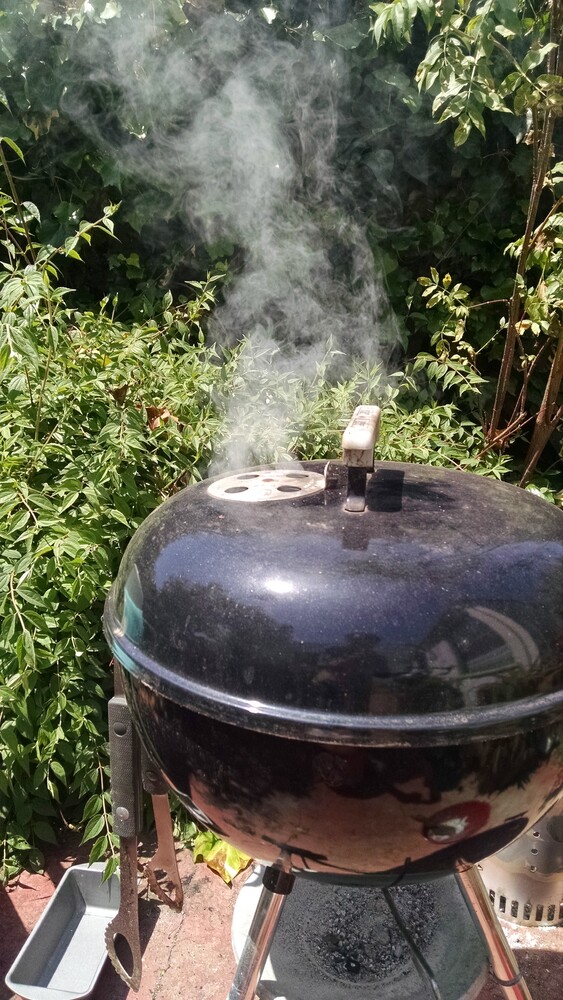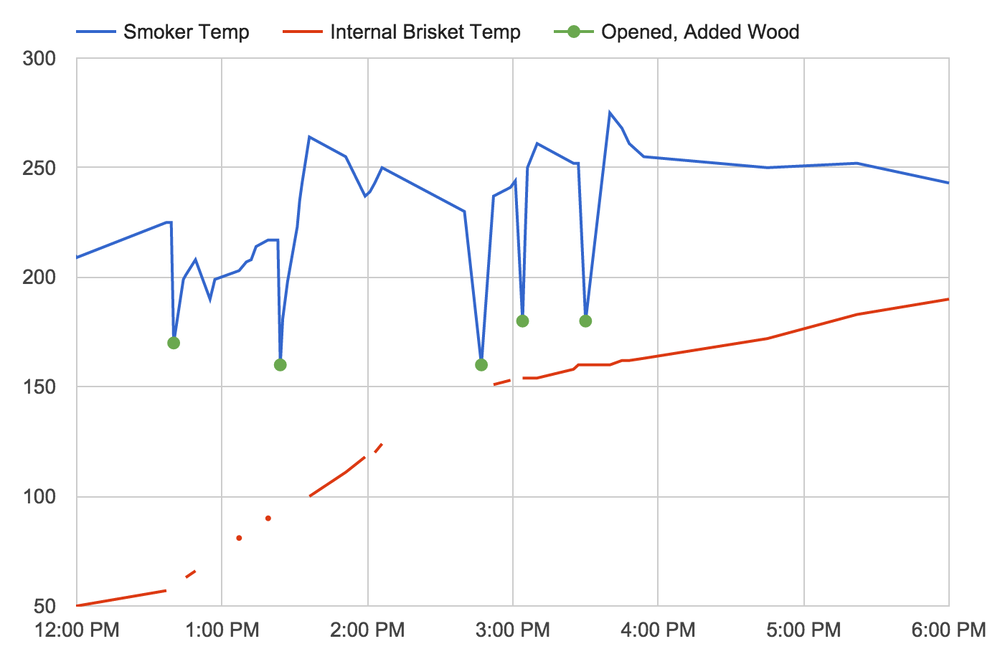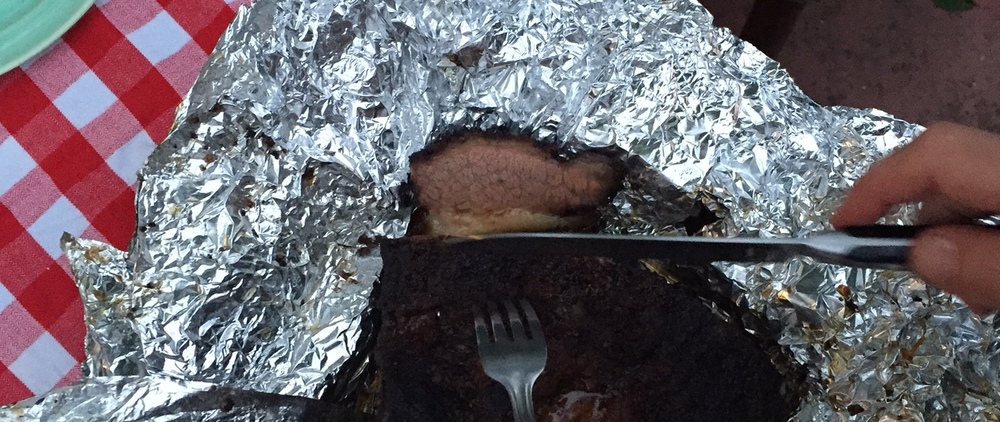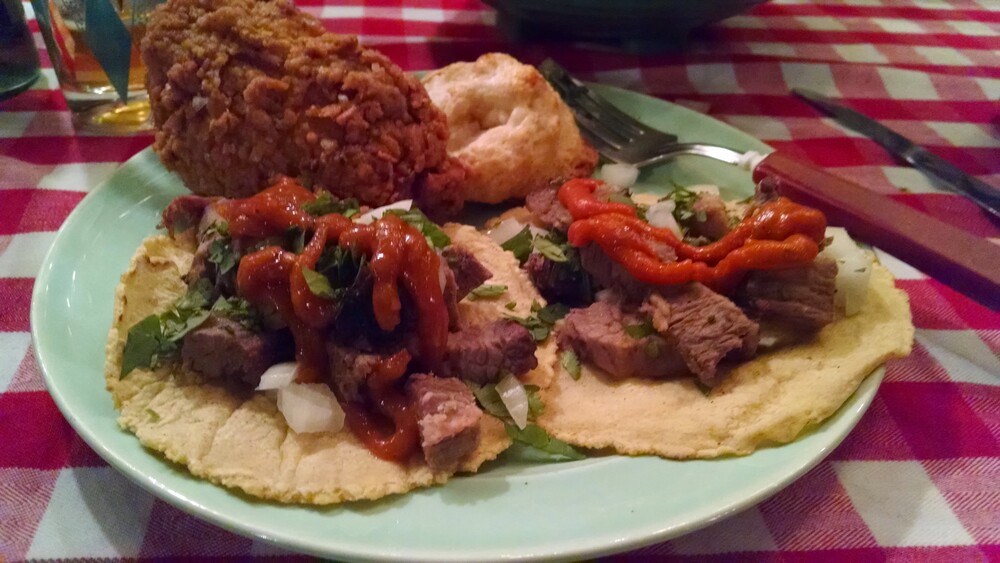Two Hour Tacos? Why not Ten Hour Tacos, with a slow-smoked brisket, hand made tortillas, pickles, and a creamy BBQ sauce?
We threw a dinner party inspired by a weekend trip to Far West Texas, and this is the story of the brisket.
I’d never actually smoked meat before, though I knew the general principle of indirect heat / “slow and low”. It became clear it wouldn’t just be a “set and forget it for 8 hours” process, and that there was a whole range of intuition, tweaking of the fire, and experience needed to get a good smoke. Well, there’s no real way to learn but by doing… so after browsing various online forums and getting pointed at this Saveur article, I had a general plan.
I’d use a charcoal grill with the coals on one side and a pan of water on the other, a whole 5lb brisket with the fat still on, with lid vents above the meat to draw smoke across it, while adjusting temperature primarily with the bottom vents to try to keep the smoker between 200 and 250F. Since I didn’t have good intuition (or experience with the grill I was going to be using), I splurged on a dual probe wireless thermometer where I could leave one probe in the brisket itself and another in the air within the grill/smoker, to let me know when the temperature was getting too high or low:

I also spent a few evenings before the weekend getting sucked into websites discussing the pros and cons of different styles and types of wood (for example: " Amazing Ribs: The Zen of Wood") and even the Wikipedia page on charcoal itself. I settled on a common approach of using charcoal for the steady heat (since the porosity and composition of charcoal makes it much easier to adjust burn temperature by modulating airflow, compared to wood which would burn hot and fast), combined with a handful of wood chunks to produce the smoke (not chips which would require too frequent replenishment over what I expected to be an all-day affair). For the wood I chose a mix of mesquite for traditional flavor, cut a bit with milder hickory and sweeter applewood as there seems to be active debate whether an all-mesquite-wood smoke imparts too much bitterness over a long slow smoke like a brisket.
Many hardware stores only carried charcoal and wood chips, but I found chunks of mesquite at the Cole Hardware on Mission St, and the OSH in Berkeley had an impressive entire aisle of wood chunks and chips of various types. For future smokes– I also read about BBQ Galore in San Rafael and Lazarri’s in Bayview (SF), though Lazarri’s is only open weekdays and I didn’t have time to make it over.
The night before the smoke, I made a dry rub for the brisket (I considered keeping it salt-and-pepper-simple for my first time, but ended up with a light rub mostly from that Saveur article– salt, pepper, paprika, brown sugar, mustard, cumin, coriander, and thyme):
The next morning, I was ready to go. After a few hours letting coals burn down and fiddling with the fire (the inlet vents on the old Weber were rusted open, making it hard to restrict oxygen flow enough to get the temperature down below 300F, which would have been disastrous for slow-cooling– eventually I wedged sheets of foil into each inlet vent which I could move side to side with a chopstick to control airflow) I was able to toss on wood chunks and the brisket and start the smoke. A few hours from the course of the next 6 hours as I fiddled with airflow and added wood whenever the smoke died down:
Out of curiosity, I kept notes on the temperatures of the smoker and the internal brisket temperature over most of the day– here’s a graph of those notebook scribbles:
Once the brisket hit an internal temperature of 160F, I took it out, poured half a beer over it, and wrapped it in thick aluminum foil before tossing it back onto the smoker. This helped it cook the rest of the way through and form a nice crust around the edge:
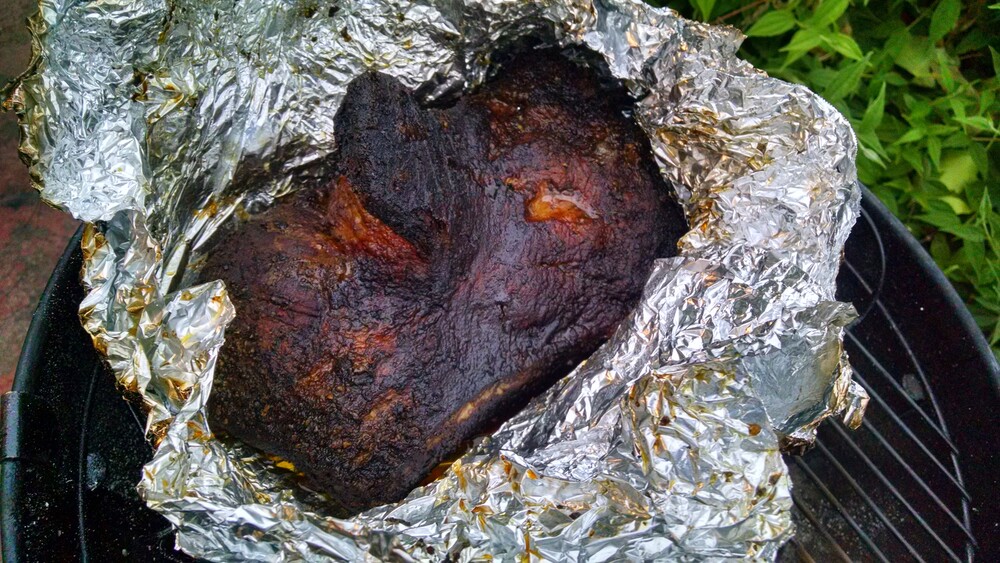
Finally, after 8 hours outdoors in the mild sunny Bay Area weather tending meat with a beer on hand, it was done. I let the brisket rest an hour still wrapped to reabsorb its juices, then opened up the foil and diced it into cubes for the tacos.
Moderate success! It tasted great, with a strong but not overpowering or bitter smokiness, and when paired with some handmade tortillas, onion, cilantro, and barbecue sauce it was an excellent part of the meal:
The texture was certainly “chewy”– not unreasonably so, but not as tender as I’d imagined, so I still have plenty to learn…
Side note– the barbecue sauce I made was a hit, so I’ll jot the recipe down here. As a Northerner I claim no authenticity, but it was loosely based on a few online recipes for Texas BBQ sauce that highlighted tomato + vinegar + sugar as the base:
- Saute half a diced onion in a substantial amount of butter (maybe 3 Tbsp)
- Add a bottle of ketchup, plus perhaps half a cup of cider vinegar, salt, pepper, cayenne, smoked paprika, cumin, and marash chili flake
- Puree with an immersion blender
I don’t have quantities as the spicing was done to taste, but the vinegar, paprika, marash chili, and butter in particular came together to make an interesting, rich sauce with a background of slow-burn smokiness.
